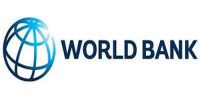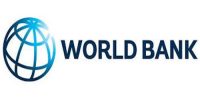The Federal Reserve System (FRS) is the central bank of the United States Fed, as it is commonly known, regulates the financial and financial systems of the United States. It was created on December 23, 1913, after the enactment of the Federal Reserve Act, which led to the desire for central control of the financial system in resolving the financial crisis (especially the panic of 1907). The Federal Reserve System is made up of a central government agency of Washington, DC, the Board of Directors, and 12 regional Federal Reserve Banks in major U.S. cities. Over the years, the Great Depression of the 1930s and the Great Depression of the 2000s led to the expansion of the role and responsibilities of the Federal Reserve System.
The power of the Federal Reserve comes from its ability to provide what is known as the Federal Reserve Notes. The seven-member board of directors of the Federal Reserve System reviews the reserve requirements of banks within statutory limits and sets the discount rates set by the 12 Federal Reserve Banks and reviews the budgets of the Reserve Banks. The Chairman of the Board of Governors is appointed by the President of the United States for a term of four years. Its responsibilities have expanded over the years and now include overseeing and regulating banks, maintaining financial stability, and providing financial services to depositors, the United States, and foreign government agencies. Banks in the United States are also subject to rules established by the state, the Federal Deposit Insurance Corporation (if they are members), and the Office of the Regulator of Currency (OCC). Nationally chartered commercial banks are required to hold stocks and can choose any of the board members of the Federal Reserve Bank in their region. The Federal Open Market Committee (FOMC) determines monetary policy. Since inflation in the 1970s, the Federal Reserve’s monetary policy has focused on curbing the rapid rise in general price levels. When the general price level is rising too fast, the Federal Reserve slows down the economic expansion by slowing down the money supply, thereby raising short-term interest rates. Its main goals are to promote the most sustainable output and employment and stable prices since at least 1977. Thus, the Federal Reserve System consists of both public and private components. Its structure is unique within the central bank, and it is not uncommon for the US Treasury Department, an entity outside the central bank, to print used currency.
The Federal Reserve has extensive oversight and regulatory authority over state-owned chartered banks and bank holding companies, as well as foreign banks operating in the United States. The FOMC adjusted its target for overnight federal funds rates at its meeting on the strength of the economy, which controls short-term interest rates. When it wants to stimulate the economy, it lowers the target rate. One of the longest-serving chairmen of the Federal Reserve Board was Alan Greenspan, who took office in August 1987 and held the post until January 2006. In 2014, Janet Yelled became the first woman to chair the board, and she served until 2018. Although an instrument of the U.S. government, the Federal Reserve System considers itself an “independent central bank because its monetary policy decisions do not have to be approved by the president or anyone else in the executive or legislative branches of the government, it does not receive funding” allocated by Congress, and The terms of the members of the Board of Governors extend to multiple presidential and congressional positions.














